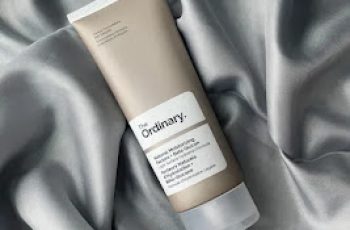
How to Layer Hyaluronic Acid with Salicylic Acid
We’ve been discussing layering skincare products on The Beauty Insiders blog for a while now, and today we’re focusing on two ingredients that have earned a reputation for being extremely beneficial to the skin in their own way.
With that in mind, it’s time to take a deep dive into how to layer hyaluronic acid with salicylic acid. You’ll be amazed at the results you’ll see on your skin when you combine these two powerful ingredients.
Should I apply salicylic acid or hyaluronic acid first?
When using salicylic acid, it’s best to keep in mind the common drying side effect of this popular salicylic acid. The different percentages of salicylic acid found in different products depend on the product you use, which in turn dictates which step you use hyaluronic acid in your daily application.
As mentioned earlier, salicylic acid is commonly found in a variety of products, including face washes, cleansers, toners, serums, and face oils. If you compare it to hyaluronic acid, you’ll find that this hydrating ingredient is often found in products that are applied at the end of your daily regimen, including serums, moisturizers, and face oils. Using hyaluronic acid after salicylic acid seems like a natural step in your skincare routine.
You may also find that using hyaluronic acid after salicylic acid combats signs of dryness and irritation while locking moisture into the skin’s outer surface and strengthening its protective barrier. Once the skin’s protective barrier is fully functioning, it can prevent free radicals and other environmental influences from causing further damage to the skin.
Can salicylic acid, niacinamide, and hyaluronic acid be used together?
You actually can! The main benefit of using niacinamide and hyaluronic acid together is their ability to moisturize and protect the skin. For example, when hyaluronic acid is applied to the face, it binds the maximum amount of water, hydrating both the outer and lower layers. Applying once in the morning will provide hydration all day and into the evening. Using niacinamide afterward will help balance and regulate natural sebum production. This is an ideal ingredient for those who are prone to blemishes and lack of hydration.
This hydrating combination makes the use of salicylic acid a breeze and significantly reduces the risk of skin irritation or signs of dryness. The result is a hydrated, perfectly clear complexion.
Is hyaluronic acid better or salicylic acid better?
This question is difficult to answer because each ingredient has different benefits for the skin. When using salicylic acid or hyaluronic acid in your daily routine, you need to pay close attention to your skin type as this will determine whether you can use salicylic acid as it is an effective salicylic acid with impressive acne-fighting properties. Hyaluronic acid is one of the very few ingredients that can be safely applied to all skin types. By combining the two, you will reap the benefits of making your skin look and feel better. So why not use both since they are equally effective and have unique benefits for the skin? It is best to perform a 24-hour patch test on your forearm and consult a dermatologist or doctor to avoid any adverse reactions.
What is the order of application of acids?
When using acids, it is best not to apply more than two applications to the skin as this may be too much for the skin and may cause irritation. For example, if a serum contains these acids, I recommend choosing a blend with an active ingredient such as glycolic acid, lactic acid, or salicylic acid first. This allows these effective serums to penetrate into the lower layers of the skin. You can then follow up with a nutrient-rich, hydrating serum with hyaluronic acid to combat dryness or irritation, soothe the skin and lock in moisture to keep the skin hydrated and elastic.
Can I use hyaluronic acid after salicylic acid?
This depends on the consistency of the skincare formula containing these ingredients. For example, if you use a serum after applying your moisturizer or even sunscreen, it will be completely impossible for the potent cocktail of active ingredients in the serum to penetrate the layers below. Remember to apply your products from the thinnest layer to the thickest, as this will allow all active ingredients and formulas to reach the best skin results. As mentioned above, hyaluronic acid is usually found in products that you apply at the end of your skincare routine, such as serums, moisturizers, or creams. This prevents the salicylic acid from drying out the skin and locks in extra moisture in the protective barrier.
When should I use salicylic acid routinely?
There are a variety of ways to incorporate salicylic acid into your daily routine. Since it is commonly found in a variety of skincare products, it is easy to incorporate this powerful ingredient. It is important to incorporate these ingredients into your daily routine whenever possible to avoid irritation. This can be achieved by initially using it every two or three days to build skin tolerance. For more information on adding a salicylic acid serum to your skincare routine, check out our dedicated blog post.
Should I use a salicylic acid serum in the morning or at night?
This depends a lot on your skin type. Regular use of salicylic acid is more beneficial for those with blemish-prone and oily skin. However, salicylic acid serums contain a higher percentage of powerful BHAs and stay on the skin longer. This can cause skin irritation, especially when used twice a day, morning and night. Using salicylic acid at night is more beneficial for the skin because it can be free from free radicals and other daily aggressors that can cause skin imbalance and damage.
Can I use salicylic acid every day?
If your skin can tolerate daily use of salicylic acid, incorporate it into your routine whenever possible to achieve results. Good tip: If you notice your skin starts to feel tight, irritated, or dry, it’s best to alternate your BHAs. Remember, you can have too much of a good thing, so fill your routine with a range of powerful ingredients that work together to deliver impressive results.


